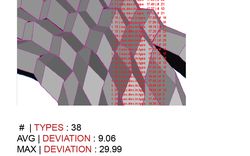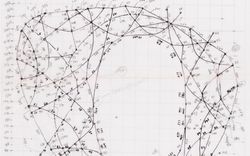Cyanotopia
Video and text by Mika Savela
What is the new blue?
Blue might seem like a very natural or even universal colour, but it is more often a perception rather than a material reality. A scattering event in the earth’s atmosphere, a dash of blue that makes white even whiter and turns day into night, a glow emanating from smartphone screens that keeps us awake—these are all examples of the many different roles blue plays in our world today, but early civilizations didn’t even know what blue was. (Except that some of them did, as we have learned.) In the images that surround us, commercialized filters and presets seem to have a special relationship with blue tint, turning cozy into cool, old timey into future forward. Whether we are looking at images in the archive or outside of it, everything we see is filtered. Is the filtered reality an actual place to be? Is the new reality blue?
As we know, the eye has specialized cells that react to a small spectrum of wavelengths of electromagnetic radiation reflected off of the surfaces of objects around us. The brain then reinterprets this stimulus as visual perception. The way things appear and the colours we see are entirely dependent on specific circumstances. In this sense, the colours we learn in kindergarten aren’t really static features of the world. Everything that we see—as well as everything that we depict through photographic means—is a representation of reality. This realization has had some fundamental philosophical repercussions, but in the current era of digital screens, it is quite easy to forget that almost all the images that we see and create are filtered by choice, by algorithms or other technical means. Image making may have had a special affinity for realism in the history of Western art, but today’s images are almost never honestly realistic. (In the rare cases when they are, we cherish them by tagging them as having #nofilter.) On one hand, this is no different from how things have always been. On the other hand, everything has completely changed.
In early photography, the cyanotype process was a relatively reliable and cost-effective method of reproducing images. Originally, the distinct blue hue of the images wasn’t meant to make reality more colourful or interesting. It was rather a technical side effect, meant to be filtered out by the viewer. Today, the blue of the cyanotype cannot be overlooked, and cyanotypes in archives don’t seem old so much as like strange blue objects with an almost alien quality. This shift in our perception is caused by the fact that while the Prussian blue of the cyanotype is a material quality that is rational and tangible, much of contemporary blueness isn’t. We are surprised by the coloured reality of cyanotypes, by the strange objecthood created by total colourization, because tinting images today no longer requires a pigment. The digital blue screen is the International Klein Blue of our time, at times comically so.
Blue screens are made of light, and they represent a new kind of blue tone, which can only really be seen and experienced on CRT monitors, as the blue phosphor dots on RGB shadow masks are bombarded by electrons. In the current era of liquid crystal displays, achieving “screen blue” digitally is extremely easy. But reproducing this look in print, or in the physical world more generally, is more difficult, and techniques like Risograph have become increasingly popular as ways to achieve such vibrancy. These methods also promote a romantic view of ink as something that is more authentic than the digitally tinted image. Cyanotypes and even blueprints seem new again.
But the new ways of seeing blue are also part of a larger shift related to digital imagery. As mobile devices with cameras have become omnipresent, the sheer amount of images circulating on digital platforms has exploded. It might already be hard to remember, but the popularity of image sharing through social media began in part because of the development of filters that imitate the appearance of old film and instant photographs. For example, the Polaroid look, devoid of certain hues and colours, became a quick way of aestheticizing perfectly normal moments. Filtered digital images seem to capture more emotion and intensity, even though their effects are entirely simulated by software.
Naturally, the development of contemporary architectural imagery has not been immune to digital filtering. Changes in hues and other ways of manipulating the atmosphere of images are an integral part of representing planned reality, to show design in the most interesting possible light. Some say that there is even an editorial bias toward blue skies in the photography of architectural projects, not to mention night-time renderings, birds and hot-air balloons, and other unnatural effects. As the digital world is starting to feel more like home, screen blue has become part of the architectural illustrator’s palette, and the RGB colour model has become part of “the world.” Living in cyanotopia, a world of blue screens, we are constantly reminded of the unrealness of the perceived and crafted reality. As a result, even Aldo Rossi’s Polaroids might look different.
Mika Savela produced this video and text in 2017 as part of a research project entitled “Offness.” This work is the result of the multidisciplinary research program “Architecture and/for Photography” developed by the CCA, with the generous support of the Andrew W. Mellon Foundation.























